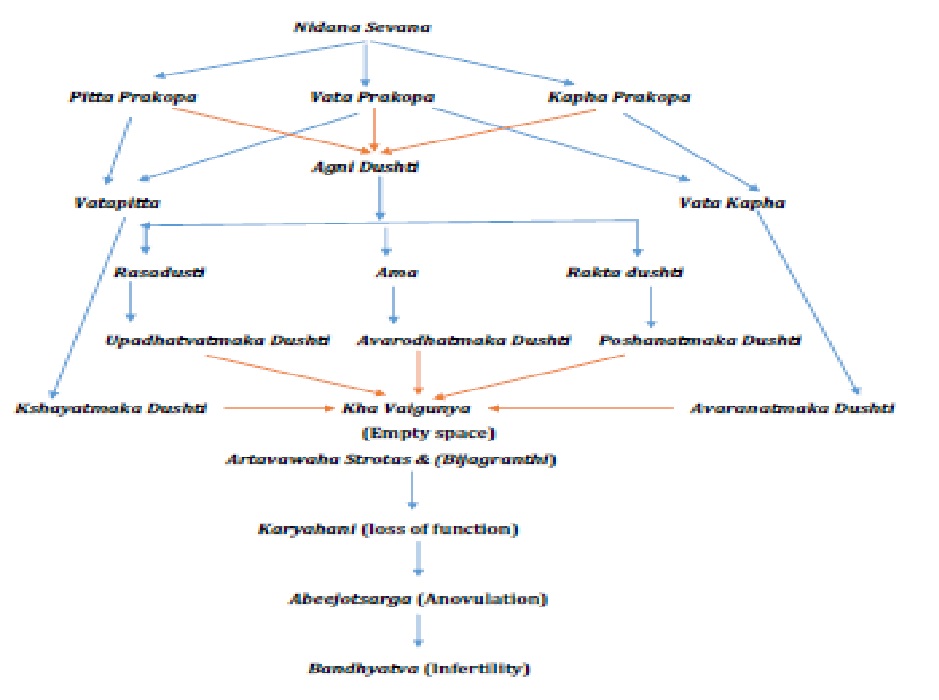Basti - A Ray of Hope for Female Infertility
DOI:
https://doi.org/10.47070/ayushdhara.v9i6.1127Keywords:
Bandhyatva, Basti, Infertility, Samshamana, Samshodhana.Abstract
Infertility is the inability to conceive even after one year of regular sex without using birth control. Female infertility is a challenging topic in the society today as it not only leads to distress and depression but also may lead to disturbed family life. Premature ovarian insufficiency, polycystic ovarian syndrome, endometriosis, uterine fibroids and endometrial polyps may play a role in female infertility, ovulatory problems being the most common. Many factors like certain genetic factors, increasing age, improper nutrition, environmental pollution and increasing stress in day to day life may contribute to female infertility. In Ayurvedic literature, infertility has been described under Bandhyatva. Treatment offered by Modern Science mainly includes the use of hormonal medicines or injections and Assisted Reproductive Technologies (ART). On the other hand Ayurvedic treatment includes Nidana Parivarjana (removal of the cause), Dietary management, Samshamana (pacificatory therapy) and Samshodhana (purification and cleansing). Basti (medicated enema) is one of the most important Samshodhana procedures which can be used in the management of female infertility as it not only balances the vitiated Dosha (three humours- Vata, Pitta, Kapha) but also provides nutrition hence correcting the overall condition of the patient.
Downloads

Downloads
Published
Issue
Section
License
Copyright (c) 2022 AYUSHDHARA

This work is licensed under a Creative Commons Attribution-NonCommercial-ShareAlike 4.0 International License.


